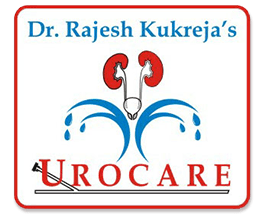Understanding The Prostate Gland
1. What is the prostate gland?
The prostate is a walnut shaped gland surrounding the junction of the urinary bladder (balloon like organ that stores urine) and the urethra (tube that throws urine out through the penis). It is present in every male by birth. In adulthood, it produces a liquid that comes out in the semen along with the sperms. Its normal size ranges from 11 to 16 gm.
2. What are the common disease affecting the prostate gland?
There are three diseases mainly.
- Age related prostate growth and disease
- Prostate Infection (Prostatitis)
- Prostate Cancer
Age related prostate growth is the most common disease. The prostate gland may increase in size with age, especially after the age of 50years. An enlarged or sometimes even a normal sized prostate gland may compress on the urethra (tube that throws urine out through the penis). This would create difficulty in passing urine.
3. What are the common signs of prostate disease?
Prostate diseases can affect you in 2 ways
- Voiding (Urine passing) symptoms: Difficulty in passing urine, prolonged time taken to pass urine, need to apply pressure to pass urine, thin or interrupted urine stream, feeling of incomplete emptying of the urinary bladder.
- Urine Storage symptoms: Frequent desire to pass urine, unable to control the desire to pass urine with or without leakage of few drops of urine in the clothes.
Other common symptoms of prostate diseases are blood in the urine, burning while passing urine, pain in the lower abdomen while passing urine.
4. Do these symptoms confirm prostate disease only?
No. Similar symptoms can also be present in patients with diabetes, neurological diseases like paralysis, slipped disc compression, etc.
5. How does one confirm whether he has a prostate disease?
You need to consult your Urologist. Besides examination by the doctor, Sonography of the abdomen, uroflowmetry (a test to assess your urinary flow), urine test and blood tests need to be done. 2 important blood tests are Creatinine (kidney function status) and PSA (prostate cancer screening test).
6. Can a person prevent prostate disease?
No. But you need to modify your lifestyle with age to prevent increasing your symptoms. These are simple steps such as: Prevent constipation, Increase fibre intake in your diet, take regular fluid instead of over drinking large amount of fluid at one time, and pass urine at regular intervals instead of delaying your urination for lengthy periods.
7. What is the treatment for age related prostate disease?
The most important part of treatment is lifestyle modification as highlighted above.
Prostate diseases can be treated by medicines or endoscopic surgery. Majority of patients with early prostate disease can be controlled by medicines. Medicines are of various types. The size of the prostate and the age of the patient help in deciding the correct medicine. It is important to remember that medicines do not permanently cure the disease. Hence they need to be taken daily and almost life long. They do not cause any serious complications or side effects. Your Urologist would guide you your correct type and dose of medicines. Regular checkups once every 2 to 6 monthly is important to assess whether the disease is well controlled by the medicines.
8. When is Surgery required?
Indications for surgery include:
- No relief with medicines.
- Severe obstruction in the flow of urine
- Urinary retention (total urinary blockage with need to pass a tube to remove the urine from the urinary bladder)
- Complications like formation of stones in the urinary bladder, hernia formation, frequent bleeding in the urine, kidney failure, etc
9. If required, how is Surgery done?
Open prostate surgery (Scar and Stitches) is obsolete. Endoscopic Surgery is the curative and the best treatment for age related prostate disease. There are lot of techniques of endoscopic surgery. The three best are:
- TURP
- Plasma (Bipolar)
- Holmium Laser resection
Basically all the 3 modalities are safe and done similarly endoscopically. The prostate gland is cut and removed endoscopically. TURP is the standard and the most well accepted treatment all over the world. The other 2 treatments are more helpful for large prostates (more than 60gm) and high risk cardiac patients.
In all the three types of endoscopic surgery, the patient is hospitalised for 2 to 3 days, a catheter (tube) is placed after the surgery to drain the urine for the initial 2 days. The amount of bleeding is almost insignificant in all the 3 types. There is no scar or hole in any of these surgeries.
10. Can there be any complications after endoscopic surgery?
The chances of complications after the endoscopic surgery are minimal. The common side effects are infection and stricture (obstruction in a part of urinary tube in the penis). These occur in 5 to 10%. Also there can be some loss of sexual function. These side effects are however negligible with plasma or laser technique.
11. Is prostate cancer curable?
Yes, if diagnosed early with the help of blood PSA test. Laparoscopic surgery can cure the prostate cancer if diagnosed at an early stage. Anyway prostate cancer is the one of the slowest growing cancers in the male population.

